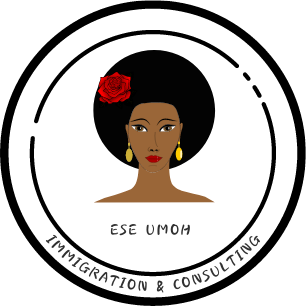Dear future neighbour,
If you’ve ever tried to check how long it takes for IRCC to process a visitor visa, work permit, or study permit, you’ve probably noticed one thing – the timelines can vary wildly depending on where you apply from.
While IRCC publishes average processing times, these numbers are constantly shifting due to factors like seasonal demand, local visa office capacity, and even geopolitical events. For example, a study permit from one country might take just a few weeks, while from another it could stretch to several months.
What many applicants don’t realize is that processing time is only part of the story. The quality and completeness of your application play a huge role. Missing documents, unclear purpose of travel, or inconsistencies between your forms and supporting evidence can all trigger delays—or worse, refusals.
That’s why it’s crucial to prepare your file strategically, not just quickly. Understanding how IRCC assesses applications can make the difference between a smooth approval and a long wait in limbo.
Below, we’ve compiled a current list of IRCC processing times for temporary visa applications submitted from outside Canada to give you a clear picture of what to expect.
Processing time for Visiting Visa as at October 20, 2025
| S/N | COUNTRY | PROCESSING TIME (VISITING VISA) |
| 1 | Afghanistan | 94 days |
| 2 | Albania | 57 days |
| 3 | Algeria | 42 days |
| 4 | Andorra | No processing time available |
| 5 | Angola | 84 days |
| 6 | Anguilla | No processing time available |
| 7 | Antigua and Barbuda | 37 days |
| 8 | Argentina | 31 days |
| 9 | Armenia | 26 days |
| 10 | Aruba | No processing time available |
| 11 | Australia | 17 days |
| 12 | Austria | 68 days |
| 13 | Azerbaijan | 20 days |
| 14 | Bahamas | 45 days |
| 15 | Bahrain | 37 days |
| 16 | Bangladesh | 25 days |
| 17 | Barbados | 68 days |
| 18 | Belarus | 32 days |
| 19 | Belgium | 114 days |
| 20 | Belize | 26 days |
| 21 | Benin | 501 days |
| 22 | Bermuda | 45 days |
| 23 | Bhutan | No processing time available |
| 24 | Bolivia | 22 days |
| 25 | Bonaire | No processing time available |
| 26 | Bosnia and Herzegovina | 107 days |
| 27 | Botswana | 69 days |
| 28 | Brazil | 47 days |
| 29 | British Virgin Islands | No processing time available |
| 30 | Brunei | No processing time available |
| 31 | Bulgaria | 14 days |
| 32 | Burkina Faso | 121 days |
| 33 | Burma (Myanmar) | 26 days |
| 34 | Burundi | 206 days |
| 35 | Cambodia | 23 days |
| 36 | Cameroon | 603 days |
| 37 | Cabo Verde | No processing time available |
| 38 | Cayman Islands | 45 days |
| 39 | Central African Republic | 186 days |
| 40 | Chad | 230 days |
| 41 | Chile | 26 days |
| 42 | China (People’s Republic of) | 24 days |
| 43 | Colombia | 48 days |
| 44 | Comoros Island | No processing time available |
| 45 | Costa Rica | 23 days |
| 46 | Côte d’Ivoire | 150 days |
| 47 | Croatia | 62 days |
| 48 | Cuba | 20 days |
| 49 | Cyprus | 58 days |
| 50 | Czech Republic | 63 days |
| 51 | Democratic Republic of Congo (Kinshasa) | 560 days |
| 52 | Denmark | 73 days |
| 53 | Djibouti | 43 days |
| 54 | Dominica | 96 days |
| 55 | Dominican Republic | 21 days |
| 56 | Ecuador | 40 days |
| 57 | Egypt | 127 days |
| 58 | El Salvador | 22 days |
| 59 | Equatorial Guinea | 266 days |
| 60 | Eritrea | 76 days |
| 61 | Estonia | 23 days |
| 62 | Eswatini | 722 days |
| 63 | Ethiopia | 63 days |
| 64 | Fiji | 14 days |
| 65 | Finland | 59 days |
| 66 | France | 108 days |
| 67 | Gabon | 172 days |
| 68 | Gambia | 229 days |
| 69 | Georgia | 22 days |
| 70 | Germany | 75 days |
| 71 | Ghana | 111 days |
| 72 | Greece | 57 days |
| 73 | Grenada | 43 days |
| 74 | Gautemala | 21 days |
| 75 | Guinea | 185 days |
| 76 | Guinea-Bissau | No processing time available |
| 77 | Guyana | 34 days |
| 78 | Haiti | 30 days |
| 79 | Holy See | No processing time avaialable |
| 80 | Honduras | 21 days |
| 81 | Hong Kong SAR | 26 days |
| 82 | Hungary | 67 days |
| 83 | Iceland | No processing time avaialable |
| 84 | India | 86 days |
| 85 | Indonesia | 35 days |
| 86 | Iran | 223 days |
| 87 | Iraq | 174 days |
| 88 | Ireland | 50 days |
| 89 | Israel | 53 days |
| 90 | Italy | 59 days |
| 91 | Jamaica | 33 days |
| 92 | Japan | 34 days |
| 93 | Jordan | 143 days |
| 94 | Kazakhstan | 28 days |
| 95 | Kenya | 76 days |
| 96 | Kiribati | No processing time available |
| 97 | Kosovo | 56 days |
| 98 | Kuwait | 53 days |
| 99 | Kyrgyzstan | 22 days |
| 100 | Laos | 26 days |
| 101 | Latvia | 34 days |
| 102 | Lebanon | 44 days |
| 103 | Lesotho | 438 days |
| 104 | Liberia | 228 days |
| 105 | Libya | 101 days |
| 106 | Liechtenstein | No processing time available |
| 107 | Lithuania | 26 days |
| 108 | Luxembourg | 104 days |
| 109 | Macao SAR | 27 days |
| 110 | Macedonia | 92 days |
| 111 | Madagascar | 67 days |
| 112 | Malawi | 208 days |
| 113 | Malaysia | 35 days |
| 114 | Maldives | No processing time available |
| 115 | Mali | 75 days |
| 116 | Malta | 55 days |
| 117 | Marshall Islands | No processing time available |
| 118 | Martinique | No processing time available |
| 119 | Mauritania | 215 days |
| 120 | Mauritius | 52 days |
| 121 | Mexico | 50 days |
| 122 | Micronesia (Federated States of) | No processing time available |
| 123 | Moldova | 17 days |
| 124 | Monaco | No processing time available |
| 125 | Mongolia | 25 days |
| 126 | Montenegro | 92 days |
| 127 | Morocco | 70 days |
| 128 | Mozambique | 513 days |
| 129 | Namibia | 481 days |
| 130 | Nauru | No processing time available |
| 131 | Nepal | 21 days |
| 132 | Netherlands | 61 days |
| 133 | New Caledonia | No processing time available |
| 134 | New Zealand | 15 days |
| 135 | Nicaragua | 29 days |
| 136 | Niger | 217 days |
| 137 | Nigeria | 30 days |
| 138 | North Korea | No processing time available |
| 139 | Norway | 87 days |
| 140 | Oman | 36 days |
| 141 | Pakistan | 56 days |
| 142 | Palestinian Authority (Gaza) | 460 days |
| 143 | Palestinian Authority (West Bank) | 460 days |
| 144 | Panama | 38 days |
| 145 | Papua New Guinea | No processing time available |
| 146 | Paraguay | 19 days |
| 147 | Peru | 22 days |
| 148 | Philippines | 24 days |
| 149 | Poland | 24 days |
| 150 | Portugal | 100 days |
| 151 | Puerto Rico | No processing time available |
| 152 | Qatar | 54 days |
| 153 | Romania | 13 days |
| 154 | Republic of Congo (Brazzaville) | 121 days |
| 155 | Russia | 32 days |
| 156 | Rwanda | 143 days |
| 157 | Samoa | No processing time available |
| 158 | San Marino | No processing time available |
| 159 | Sao Tome and Principe | No processing time available |
| 160 | Saudi Arabia | 76 days |
| 161 | Senegal | 240 days |
| 162 | Serbia | 85 days |
| 163 | Seychelles | No processing time available |
| 164 | Sierra Leone | 146 days |
| 165 | Singapore | 34 days |
| 166 | Slovakia | No processing time available |
| 167 | Slovenia | 71 days |
| 168 | Solomon Islanda | No processing time available |
| 169 | Somalia | No processing time available |
| 170 | South Africa | 95 days |
| 171 | South Korea | 32 days |
| 172 | South Sudan | No processing time available |
| 173 | Spain | 105 days |
| 174 | Sri Lanka | 68 days |
| 175 | St. Kitts and Nevis | No processing time available |
| 176 | St. Lucia | 39 days |
| 177 | St. Vincent and Grenadines | 40 days |
| 178 | Sudan | No processing time available |
| 179 | Suriname | 46 days |
| 180 | Sweden | 72 days |
| 181 | Switzerland | 111 days |
| 182 | Syria | 222 days |
| 183 | Tahiti | No processing time available |
| 184 | Taiwan | 30 days |
| 185 | Tajikistan | 38 days |
| 186 | Tanzania | 79 days |
| 187 | Thailand | 23 days |
| 188 | Timor-Leste (Timor oriental) | No processing time available |
| 189 | Togo | 414 days |
| 190 | Tonga | No processing time available |
| 191 | Trinidad and Tobago | 36 days |
| 192 | Tunisia | 100 days |
| 193 | Turkiye | 23 days |
| 194 | Turkmenistan | 89 days |
| 195 | Turks and Caicos Islands | 45 days |
| 196 | Tuvalu | No processing time available |
| 197 | Uganda | 75 days |
| 198 | Ukraine | 56 days |
| 199 | United Arab Emirates | 85 days |
| 200 | United Kingdom | 57 days |
| 201 | United States of America | 40 days |
| 202 | Uruguay | 29 days |
| 203 | US Virgin Islands | No processing time available |
| 204 | Uzbekistan | 32 days |
| 205 | Vanuatu | No processing time available |
| 206 | Venezuela | 41 days |
| 207 | Vietnam | 40 days |
| 208 | Yemen | 99 days |
| 209 | Zambia | 731 days |
| 210 | Zimbabwe | 528 days |
Processing time for Work Permit as at October 20, 2025
| S/N | COUNTRY | PROCESSING TIME (WORK PERMIT) |
| 1 | Afghanistan | No processing time available |
| 2 | Albania | 11 weeks |
| 3 | Algeria | 12 weeks |
| 4 | Andorra | No processing time available |
| 5 | Angola | No processing time available |
| 6 | Anguilla | No processing time available |
| 7 | Antigua and Barbuda | No processing time available |
| 8 | Argentina | 6 weeks |
| 9 | Armenia | No processing time available |
| 10 | Aruba | No processing time available |
| 11 | Australia | 6 weeks |
| 12 | Austria | No processing time available |
| 13 | Azerbaijan | No processing time available |
| 14 | Bahamas | No processing time available |
| 15 | Bahrain | No processing time available |
| 16 | Bangladesh | 9 weeks |
| 17 | Barbados | No processing time available |
| 18 | Belarus | No processing time available |
| 19 | Belgium | 7 weeks |
| 20 | Belize | No processing time available |
| 21 | Benin | No processing time available |
| 22 | Bermuda | No processing time available |
| 23 | Bhutan | No processing time available |
| 24 | Bolivia | No processing time available |
| 25 | Bonaire | No processing time available |
| 26 | Bosnia and Herzegovina | No processing time available |
| 27 | Botswana | No processing time available |
| 28 | Brazil | 7 weeks |
| 29 | British Virgin Islands | No processing time available |
| 30 | Brunei | No processing time available |
| 31 | Bulgaria | No processing time available |
| 32 | Burkina Faso | 7 weeks |
| 33 | Burma (Myanmar) | No processing time available |
| 34 | Burundi | No processing time available |
| 35 | Cambodia | No processing time available |
| 36 | Cameroon | 7 weeks |
| 37 | Cabo Verde | No processing time available |
| 38 | Cayman Islands | No processing time available |
| 39 | Central African Republic | No processing time available |
| 40 | Chad | No processing time available |
| 41 | Chile | 5 weeks |
| 42 | China (People’s Republic of) | 8 weeks |
| 43 | Colombia | 9 weeks |
| 44 | Comoros Island | No processing time available |
| 45 | Costa Rica | No processing time available |
| 46 | Côte d’Ivoire | 11 weeks |
| 47 | Croatia | No processing time available |
| 48 | Cuba | No processing time available |
| 49 | Cyprus | No processing time available |
| 50 | Czech Republic | No processing time available |
| 51 | Democratic Republic of Congo (Kinshasa) | 10 weeks |
| 52 | Denmark | No processing time available |
| 53 | Djibouti | No processing time available |
| 54 | Dominica | No processing time available |
| 55 | Dominican Republic | 6 weeks |
| 56 | Ecuador | 12 weeks |
| 57 | Egypt | 9 weeks |
| 58 | El Salvador | 3 weeks |
| 59 | Equatorial Guinea | No processing time available |
| 60 | Eritrea | No processing time available |
| 61 | Estonia | No processing time available |
| 62 | Eswatini | No processing time available |
| 63 | Ethiopia | No processing time available |
| 64 | Fiji | No processing time available |
| 65 | Finland | No processing time available |
| 66 | France | 7 weeks |
| 67 | Gabon | No processing time available |
| 68 | Gambia | No processing time available |
| 69 | Georgia | No processing time available |
| 70 | Germany | 12 weeks |
| 71 | Ghana | 12 weeks |
| 72 | Greece | No processing time available |
| 73 | Grenada | No processing time available |
| 74 | Gautemala | 1 week |
| 75 | Guinea | No processing time available |
| 76 | Guinea-Bissau | No processing time available |
| 77 | Guyana | No processing time available |
| 78 | Haiti | 7 weeks |
| 79 | Holy See | No processing time available |
| 80 | Honduras | 4 weeks |
| 81 | Hong Kong SAR | 35 weeks |
| 82 | Hungary | No processing time available |
| 83 | Iceland | No processing time available |
| 84 | India | 9 weeks |
| 85 | Indonesia | 4 weeks |
| 86 | Iran | 50 weeks |
| 87 | Iraq | 43 weeks |
| 88 | Ireland | No processing time available |
| 89 | Israel | 10 weeks |
| 90 | Italy | 11 weeks |
| 91 | Jamaica | 6 weeks |
| 92 | Japan | 6 weeks |
| 93 | Jordan | No processing time available |
| 94 | Kazakhstan | No processing time available |
| 95 | Kenya | 11 weeks |
| 96 | Kiribati | No processing time available |
| 97 | Kosovo | No processing time available |
| 98 | Kuwait | 23 weeks |
| 99 | Kyrgyzstan | No processing time available |
| 100 | Laos | No processing time available |
| 101 | Latvia | No processing time available |
| 102 | Lebanon | 18 weeks |
| 103 | Lesotho | No processing time available |
| 104 | Liberia | No processing time available |
| 105 | Libya | No processing time available |
| 106 | Liechtenstein | No processing time available |
| 107 | Lithuania | No processing time available |
| 108 | Luxembourg | No processing time available |
| 109 | Macao SAR | No processing time available |
| 110 | Macedonia | No processing time available |
| 111 | Madagascar | 24 weeks |
| 112 | Malawi | No processing time available |
| 113 | Malaysia | 8 weeks |
| 114 | Maldives | No processing time available |
| 115 | Mali | No processing time available |
| 116 | Malta | No processing time available |
| 117 | Marshall Islands | No processing time available |
| 118 | Martinique | No processing time available |
| 119 | Mauritania | No processing time available |
| 120 | Mauritius | 28 weeks |
| 121 | Mexico | 3 weeks |
| 122 | Micronesia (Federated States of) | No processing time available |
| 123 | Moldova | No processing time available |
| 124 | Monaco | No processing time available |
| 125 | Mongolia | No processing time available |
| 126 | Montenegro | No processing time available |
| 127 | Morocco | 12 weeks |
| 128 | Mozambique | No processing time available |
| 129 | Namibia | No processing time available |
| 130 | Nauru | No processing time available |
| 131 | Nepal | 4 weeks |
| 132 | Netherlands | No processing time available |
| 133 | New Caledonia | No processing time available |
| 134 | New Zealand | No processing time available |
| 135 | Nicaragua | No processing time available |
| 136 | Niger | No processing time available |
| 137 | Nigeria | 10 weeks |
| 138 | North Korea | No processing time available |
| 139 | Norway | No processing time available |
| 140 | Oman | No processing time available |
| 141 | Pakistan | 11 weeks |
| 142 | Palestinian Authority (Gaza) | No processing time available |
| 143 | Palestinian Authority (West Bank) | No processing time available |
| 144 | Panama | No processing time available |
| 145 | Papua New Guinea | No processing time available |
| 146 | Paraguay | No processing time available |
| 147 | Peru | 6 weeks |
| 148 | Philippines | 7 weeks |
| 149 | Poland | No processing time available |
| 150 | Portugal | No processing time available |
| 151 | Puerto Rico | No processing time available |
| 152 | Qatar | 20 weeks |
| 153 | Romania | No processing time available |
| 154 | Republic of Congo (Brazzaville) | No processing time available |
| 155 | Russia | 7 weeks |
| 156 | Rwanda | No processing time available |
| 157 | Samoa | No processing time available |
| 158 | San Marino | No processing time available |
| 159 | Sao Tome and Principe | No processing time available |
| 160 | Saudi Arabia | 7 weeks |
| 161 | Senegal | 10 weeks |
| 162 | Serbia | No processing time available |
| 163 | Seychelles | No processing time available |
| 164 | Sierra Leone | No processing time available |
| 165 | Singapore | 8 weeks |
| 166 | Slovakia | No processing time available |
| 167 | Slovenia | No processing time available |
| 168 | Solomon Islanda | No processing time available |
| 169 | Somalia | No processing time available |
| 170 | South Africa | 13 weeks |
| 171 | South Korea | 9 weeks |
| 172 | South Sudan | No processing time available |
| 173 | Spain | 11 weeks |
| 174 | Sri Lanka | 10 weeks |
| 175 | St. Kitts and Nevis | No processing time available |
| 176 | St. Lucia | No processing time available |
| 177 | St. Vincent and Grenadines | No processing time available |
| 178 | Sudan | No processing time available |
| 179 | Suriname | No processing time available |
| 180 | Sweden | 10 weeks |
| 181 | Switzerland | No processing time available |
| 182 | Syria | No processing time available |
| 183 | Tahiti | No processing time available |
| 184 | Taiwan | 8 weeks |
| 185 | Tajikistan | No processing time available |
| 186 | Tanzania | No processing time available |
| 187 | Thailand | 5 weeks |
| 188 | Timor-Leste (Timor oriental) | No processing time available |
| 189 | Togo | 13 weeks |
| 190 | Tonga | No processing time available |
| 191 | Trinidad and Tobago | 6 weeks |
| 192 | Tunisia | 10 weeks |
| 193 | Turkiye | 4 weeks |
| 194 | Turkmenistan | No processing time available |
| 195 | Turks and Caicos Islands | No processing time available |
| 196 | Tuvalu | No processing time available |
| 197 | Uganda | No processing time available |
| 198 | Ukraine | No processing time available |
| 199 | United Arab Emirates | 23 weeks |
| 200 | United Kingdom | 9 weeks |
| 201 | United States of America | 4 weeks |
| 202 | Uruguay | No processing time available |
| 203 | US Virgin Islands | No processing time available |
| 204 | Uzbekistan | No processing time available |
| 205 | Vanuatu | No processing time available |
| 206 | Venezuela | No processing time available |
| 207 | Vietnam | 11 weeks |
| 208 | Yemen | No processing time available |
| 209 | Zambia | No processing time available |
| 210 | Zimbabwe | No processing time available |
PROCESSING TIME FOR STUDY PERMIT AS AT OCTOBER 20, 2025
| S/N | COUNTRY | PROCESSING TIME (STUDY PERMIT) |
| 1 | Afghanistan | No processing time available |
| 2 | Albania | No processing time available |
| 3 | Algeria | 5 weeks |
| 4 | Andorra | No processing time available |
| 5 | Angola | No processing time available |
| 6 | Anguilla | No processing time available |
| 7 | Antigua and Barbuda | No processing time available |
| 8 | Argentina | No processing time available |
| 9 | Armenia | No processing time available |
| 10 | Aruba | No processing time available |
| 11 | Australia | 11 weeks |
| 12 | Austria | 11 weeks |
| 13 | Azerbaijan | 4 weeks |
| 14 | Bahamas | 12 weeks |
| 15 | Bahrain | No processing time available |
| 16 | Bangladesh | 4 weeks |
| 17 | Barbados | 11 weeks |
| 18 | Belarus | No processing time available |
| 19 | Belgium | 11 weeks |
| 20 | Belize | No processing time available |
| 21 | Benin | 11 weeks |
| 22 | Bermuda | No processing time available |
| 23 | Bhutan | 5 weeks |
| 24 | Bolivia | No processing time available |
| 25 | Bonaire | No processing time available |
| 26 | Bosnia and Herzegovina | No processing time available |
| 27 | Botswana | No processing time available |
| 28 | Brazil | 6 weeks |
| 29 | British Virgin Islands | No processing time available |
| 30 | Brunei | No processing time available |
| 31 | Bulgaria | No processing time available |
| 32 | Burkina Faso | 5 weeks |
| 33 | Burma (Myanmar) | 5 weeks |
| 34 | Burundi | 16 weeks |
| 35 | Cambodia | 5 weeks |
| 36 | Cameroon | 6 weeks |
| 37 | Cabo Verde | No processing time available |
| 38 | Cayman Islands | No processing time available |
| 39 | Central African Republic | No processing time available |
| 40 | Chad | 7 weeks |
| 41 | Chile | 12 weeks |
| 42 | China (People’s Republic of) | 8 weeks |
| 43 | Colombia | 7 weeks |
| 44 | Comoros Island | No processing time available |
| 45 | Costa Rica | No processing time available |
| 46 | Côte d’Ivoire | 9 weeks |
| 47 | Croatia | No processing time available |
| 48 | Cuba | No processing time available |
| 49 | Cyprus | No processing time available |
| 50 | Czech Republic | 12 weeks |
| 51 | Democratic Republic of Congo (Kinshasa) | 5 weeks |
| 52 | Denmark | 13 weeks |
| 53 | Djibouti | No processing time available |
| 54 | Dominica | No processing time available |
| 55 | Dominican Republic | 5 weeks |
| 56 | Ecuador | 6 weeks |
| 57 | Egypt | 8 weeks |
| 58 | El Salvador | No processing time available |
| 59 | Equatorial Guinea | No processing time available |
| 60 | Eritrea | No processing time available |
| 61 | Estonia | No processing time available |
| 62 | Eswatini | No processing time available |
| 63 | Ethiopia | 9 weeks |
| 64 | Fiji | No processing time available |
| 65 | Finland | No processing time available |
| 66 | France | 9 weeks |
| 67 | Gabon | 9 weeks |
| 68 | Gambia | 12 weeks |
| 69 | Georgia | No processing time available |
| 70 | Germany | 10 weeks |
| 71 | Ghana | 15 weeks |
| 72 | Greece | No processing time available |
| 73 | Grenada | No processing time available |
| 74 | Gautemala | No processing time available |
| 75 | Guinea | 8 weeks |
| 76 | Guinea-Bissau | No processing time available |
| 77 | Guyana | No processing time available |
| 78 | Haiti | 4 weeks |
| 79 | Holy See | No processing time available |
| 80 | Honduras | No processing time available |
| 81 | Hong Kong SAR | 12 weeks |
| 82 | Hungary | No processing time available |
| 83 | Iceland | No processing time available |
| 84 | India | 4 weeks |
| 85 | Indonesia | 5 weeks |
| 86 | Iran | 59 weeks |
| 87 | Iraq | 22 weeks |
| 88 | Ireland | 12 weeks |
| 89 | Israel | 11 weeks |
| 90 | Italy | 8 weeks |
| 91 | Jamaica | 6 weeks |
| 92 | Japan | 2 weeks |
| 93 | Jordan | 6 weeks |
| 94 | Kazakhstan | 8 weeks |
| 95 | Kenya | 9 weeks |
| 96 | Kiribati | No processing time available |
| 97 | Kosovo | No processing time available |
| 98 | Kuwait | 6 weeks |
| 99 | Kyrgyzstan | No processing time available |
| 100 | Laos | No processing time available |
| 101 | Latvia | No processing time available |
| 102 | Lebanon | 10 weeks |
| 103 | Lesotho | No processing time available |
| 104 | Liberia | 10 weeks |
| 105 | Libya | No processing time available |
| 106 | Liechtenstein | No processing time available |
| 107 | Lithuania | No processing time available |
| 108 | Luxembourg | No processing time available |
| 109 | Macao SAR | No processing time available |
| 110 | Macedonia | No processing time available |
| 111 | Madagascar | 16 weeks |
| 112 | Malawi | No processing time available |
| 113 | Malaysia | 8 weeks |
| 114 | Maldives | No processing time available |
| 115 | Mali | 10 weeks |
| 116 | Malta | No processing time available |
| 117 | Marshall Islands | No processing time available |
| 118 | Martinique | 12 weeks |
| 119 | Mauritania | No processing time available |
| 120 | Mauritius | 16 weeks |
| 121 | Mexico | 8 weeks |
| 122 | Micronesia (Federated States of) | No processing time available |
| 123 | Moldova | No processing time available |
| 124 | Monaco | No processing time available |
| 125 | Mongolia | 4 weeks |
| 126 | Montenegro | No processing time available |
| 127 | Morocco | 8 weeks |
| 128 | Mozambique | No processing time available |
| 129 | Namibia | No processing time available |
| 130 | Nauru | No processing time available |
| 131 | Nepal | 4 weeks |
| 132 | Netherlands | 12 weeks |
| 133 | New Caledonia | No processing time available |
| 134 | New Zealand | No processing time available |
| 135 | Nicaragua | No processing time available |
| 136 | Niger | 10 weeks |
| 137 | Nigeria | 9 weeks |
| 138 | North Korea | No processing time available |
| 139 | Norway | 12 weeks |
| 140 | Oman | 3 weeks |
| 141 | Pakistan | 12 weeks |
| 142 | Palestinian Authority (Gaza) | No processing time available |
| 143 | Palestinian Authority (West Bank) | No processing time available |
| 144 | Panama | 7 weeks |
| 145 | Papua New Guinea | No processing time available |
| 146 | Paraguay | No processing time available |
| 147 | Peru | 4 weeks |
| 148 | Philippines | 5 weeks |
| 149 | Poland | 10 weeks |
| 150 | Portugal | No processing time available |
| 151 | Puerto Rico | No processing time available |
| 152 | Qatar | 6 weeks |
| 153 | Romania | No processing time available |
| 154 | Republic of Congo (Brazzaville) | 8 weeks |
| 155 | Russia | 5 weeks |
| 156 | Rwanda | 17 weeks |
| 157 | Samoa | No processing time available |
| 158 | San Marino | No processing time available |
| 159 | Sao Tome and Principe | No processing time available |
| 160 | Saudi Arabia | 6 weeks |
| 161 | Senegal | 8 weeks |
| 162 | Serbia | No processing time available |
| 163 | Seychelles | No processing time available |
| 164 | Sierra Leone | No processing time available |
| 165 | Singapore | 9 weeks |
| 166 | Slovakia | 13 weeks |
| 167 | Slovenia | No processing time available |
| 168 | Solomon Islands | No processing time available |
| 169 | Somalia | No processing time available |
| 170 | South Africa | 14 weeks |
| 171 | South Korea | 3 weeks |
| 172 | South Sudan | No processing time available |
| 173 | Spain | 13 weeks |
| 174 | Sri Lanka | 7 weeks |
| 175 | St. Kitts and Nevis | No processing time available |
| 176 | St. Lucia | No processing time available |
| 177 | St. Vincent and Grenadines | No processing time available |
| 178 | Sudan | No processing time available |
| 179 | Suriname | No processing time available |
| 180 | Sweden | 12 weeks |
| 181 | Switzerland | 12 weeks |
| 182 | Syria | No processing time available |
| 183 | Tahiti | No processing time available |
| 184 | Taiwan | 13 weeks |
| 185 | Tajikistan | No processing time available |
| 186 | Tanzania | 12 weeks |
| 187 | Thailand | 4 weeks |
| 188 | Timor-Leste (Timor oriental) | No processing time available |
| 189 | Togo | 16 weeks |
| 190 | Tonga | No processing time available |
| 191 | Trinidad and Tobago | 5 weeks |
| 192 | Tunisia | 8 weeks |
| 193 | Turkiye | 4 weeks |
| 194 | Turkmenistan | No processing time available |
| 195 | Turks and Caicos Islands | No processing time available |
| 196 | Tuvalu | No processing time available |
| 197 | Uganda | 8 weeks |
| 198 | Ukraine | No processing time available |
| 199 | United Arab Emirates | 7 weeks |
| 200 | United Kingdom | 10 weeks |
| 201 | United States of America | 6 weeks |
| 202 | Uruguay | No processing time available |
| 203 | US Virgin Islands | No processing time available |
| 204 | Uzbekistan | 5 weeks |
| 205 | Vanuatu | No processing time available |
| 206 | Venezuela | No processing time available |
| 207 | Vietnam | 8 weeks |
| 208 | Yemen | No processing time available |
| 209 | Zambia | No processing time available |
| 210 | Zimbabwe | 15 weeks |
Need Help With Your Application?
As a Regulated Canadian Immigration Consultant (RCIC), we specialize in ensuring your application is complete, accurate, and optimized for faster processing.
Schedule a 30-minute / 60- minute consultation or contact us at:
info@eseumohimmigration.com















